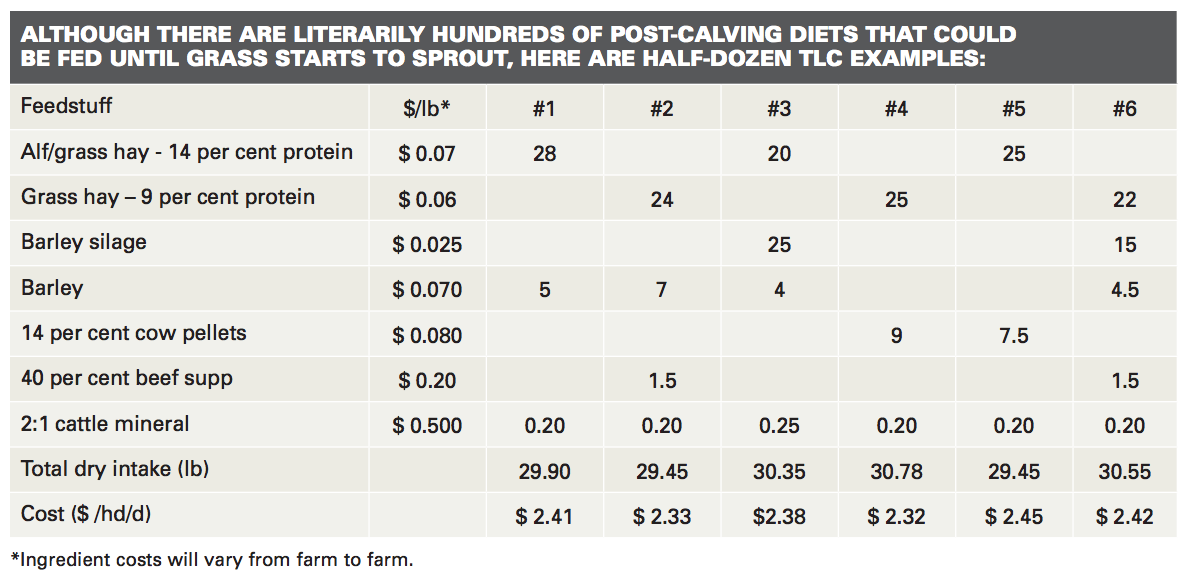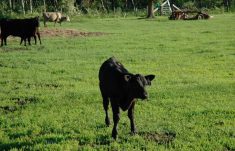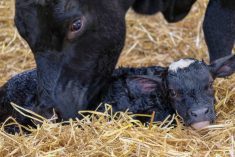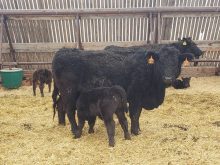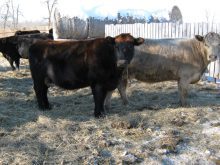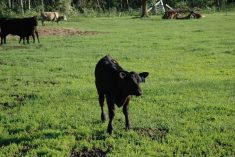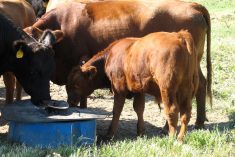While some cows are fortunate to freshen in a draft-free barn, others drop their calves outside on straw pack, in a pole barn or open drylot. Regardless of where they calve, most cows return or remain outside to not only brave the arctic cold, but must meet the challenges of nursing a new calf and prepare for a new breeding season. Therefore, a proper TLC (tender-loving-care) nutrient program is needed in order to keep them milking and get them successfully pregnant with next years’ calf.
For the next 90 days after calving, the TLC nutrient requirements for a typical lactating beef cow are the highest for any time of the year. Compared to late gestation, once a cow calves her energy needs increase by about 50 per cent, protein needs increase by about 20 to 25 per cent and the need for minerals and vitamins nearly doubles.
Read Also

Gentle treatments for pain in the neck
Heading toward year-end, people unknowingly tense up against the cold and busyness, causing neck pain that can often be treated with appropriate support and gentle mobility, athletic therapist Kathlyn Hossack says.
Of all of the nutrients, dietary energy is by far, her single largest nutrient requirement.
Cows have priorities
A post-partum mature cow milking about 10 litres per day requires about 58 to 60 per cent total digestible nutrients (TDN) of dietary energy, while a first-calf heifer will require about a 62 to 63 per cent TDN, due to their natural lower feed consumption and body growth. Most of this energy intake in both cases is prioritized; body maintenance (including keeping warm) takes precedent, followed by lactation, growth and finally reproduction. It is also important to remember all cows calving out in January to March may need 20 to 30 per cent more energy in their diets just to stay warm.
Thin cows don’t perform
Widely accepted research shows thin beef cows with poor energy status BCS of 2.0 (or less) have trouble returning to estrus within 90 days of calving to be rebred, compared to those counterparts with adequate 2.5 to 3.0 BCS. Thin first-calf heifers have also been shown to be particularly vulnerable to poor reproduction due to the energy demands of milk production and growth.
Aside from the highest energy demands for the year, protein and minerals/vitamins are important in the post-partum cow diets. A protein shortage in the post-partum diet will likely depress milk production. Dietary protein is not only involved in actual milk synthesis, but is a basic constituent of milk (re: 3.0 per cent protein, DM basis). And a lack of protein in the ration can lead to decreased rumen microbial activity (decreased fermentation and digestibility of forages and other feeds), reduced total feed intake, poor body growth in replacement heifers and visible weight loss. A post-partum cow with a 2.5-3.0 BCS that is milking well should receive about 10 to 11 per cent protein in her diet.
- From the Canadian Cattlemen website: Vitamin E/selenium requirements an open book
Similarly, macro-minerals, trace-minerals and Vitamins A, D and E play a wide range of metabolic roles in the beef cow body from vital biological reactions to milk production in the udder to stimulation of healthy follicles and the fertilization process.
All essential post-partum TLC nutrient requirements should be achieved with practical diets comprised of a foundation of home-grown/good quality forage; often augmented with energy concentrates (re: grain or high-energy grain byproducts) as well as with added high protein feedstuffs. Similar late-gestation beef rations should be aimed at maintaining current cowherd BCS, producing milk and a successful return to active reproduction.
Although there are literarily hundreds of post-calving diets that could be fed until grass starts to sprout, above are half-dozen TLC examples:
These typical post-partum beef cow diets show supplementation of dietary energy or protein is necessary when the respective nutrient demands of the lactating cows are not met by feeding forages, alone (re: minerals/vitamins supplied by commercial 2:1 cattle mineral). And avoid feeding low-quality forages in any beef diet that fails to meet all post-calving requirements.


